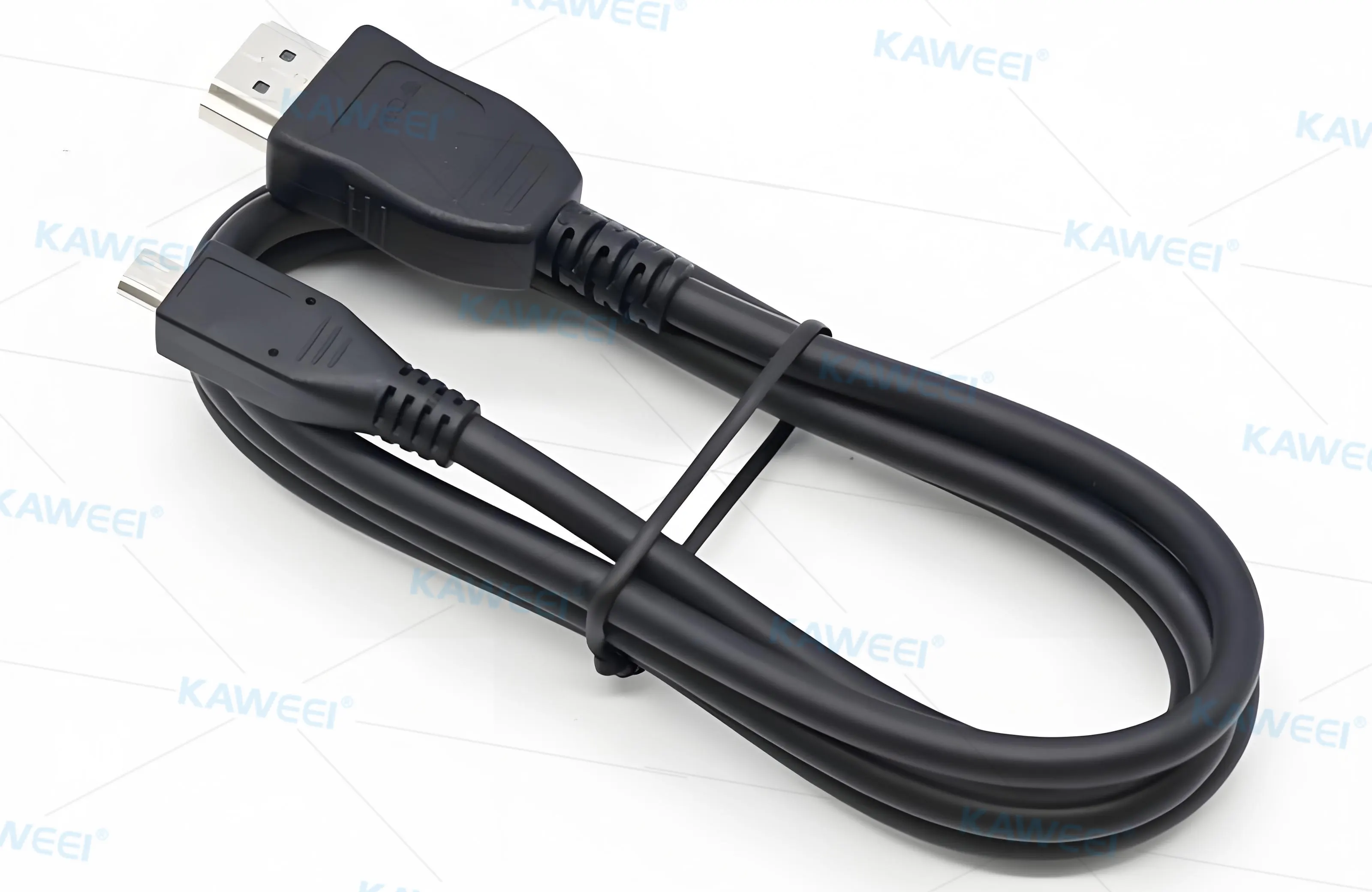
By quanyu lee
2025-09-19 10:59:55
A Comprehensive Analysis of Micro HDMI Cables: Definition, Applications, and Buying Guide
With the continuous advancement of mobile devices and high-definition display technology, Micro HDMI cables have become an essential connectivity tool for portable devices such as smartphones, tablets, cameras, and drones. They not only transmit high-resolution audio and video but also inherit the security, stability, and high-speed transmission advantages of HDMI technology. This article will comprehensively analyze the definition, performance, applications, and key considerations for purchasing Micro HDMI cables, combining the development background of HDMI with industry case studies.
What is a Micro HDMI Cable?
Micro HDMI (also known as HDMI Type D) is a miniature version of HDMI. Its interface and supporting cables are designed specifically for small devices such as tablets, digital cameras, and mobile phones. It can integrate audio and video into a compact digital interface. It inherits the advantages of standard HDMI, supports high bandwidth and uncompressed audio and video transmission up to 18Gbps, and only requires a single cable to complete the connection. It also allows these small devices to be directly connected to projectors, TVs, or computers, allowing users to enjoy a high-definition multimedia experience.
About HDMI:
- HDMI (High-Definition Multimedia Interface), first introduced in December 2002, is a secure interface that supports high-speed data transmission and encryption (see HDMI Licensing Administrator).
- HDMI cables are available in four sizes (standard, mini, micro, and automotive) to accommodate the varying requirements of different devices.
- Ultra-high-speed HDMI cables supporting 8K and 10K are already available.
- HDMI 2.1 is currently the mainstream standard, with a market share exceeding 35% and an overall industry growth rate of approximately 5.3%.
- HDMI cables can be customized and are available with or without Ethernet functionality.

Does a Micro HDMI cable support 4K resolution?
Yes. Micro HDMI cables support 4K resolution (60Hz) and are compatible with HDR technology. This means users can project HD videos directly from their phone or tablet to a 4K TV or projector, enjoying cinematic quality and immersive sound.
For example, after shooting 4K video on a Sony Xperia phone or GoPro camera, you can connect it directly to a TV or projector via Micro HDMI for smooth preview and playback.
Comparison between Micro HDMI and Mini HDMI
Although the names are similar, Micro HDMI and Mini HDMI differ in size and application:
| Compare items | Micro HDMI (Type D) | Mini HDMI (Type C) |
| size | Smaller, approximately 6.4mm × 2.8mm | Larger, approximately 10.4mm × 2.4mm |
| Main purpose | Smartphones, tablets, portable cameras | Digital cameras, tablets, and some small laptops |
| Number of plugs and unplugs | About 10,000 times | About 10,000 times |
| Video support | Up to 4K@60Hz | Up to 4K@60Hz |
| Commonness | New equipment dwindles | More commonly used |
Why was the Micro HDMI cable invented?
As mobile device screens get smaller, users demand more convenient ways to share content on larger screens. The advent of Micro HDMI enables high-definition transmission between phones, cameras, TVs, and projectors, making it quick and easy. This compact interface is a key driver of the "mobile audio and video era."
Micro HDMI Cable Applications
- Consumer Electronics: Connecting mobile phones, tablets, and TVs
- Business: Presenting between laptops/tablets and projectors
- Photography and Videography: Fast playback of 4K video captured by cameras
- Education: Connecting teaching and demonstration equipment

Micro HDMI Cable Conversion Issues
Micro HDMI to HDMI: Commonly used when connecting a phone or tablet to a larger monitor.
Micro HDMI to DVI/VGA: Suitable for older monitors.
Micro HDMI to USB-C/DP: Requires a converter or dedicated adapter.
Different types of HDMI cables include
- Standard HDMI Cable: Supports 720p/1080i and has a bandwidth of 5Gbps.
- Standard Automotive HDMI Cable: Features added shielding to prevent interference.
- High-Speed HDMI Cable: Supports 1080p and 4K (30Hz) and has a bandwidth of 10Gbps.
- Premium High-Speed HDMI Cable: Supports 4K (60Hz) and HDR and has a bandwidth of 18Gbps.
- Ultra High-Speed HDMI Cable: Supports 8K/10K and has a bandwidth of 48Gbps.
- HDMI Cable with Ethernet: Supports HEC tethering.
These different versions and types of HDMI paved the way for the widespread adoption of Micro HDMI technology.
Considerations when purchasing a Micro HDMI cable
- Confirm resolution requirements (whether 4K/8K support is required).
- Pay attention to interface compatibility (Micro HDMI ≠ Mini HDMI).
- Consider cable length and interference resistance.
- Choose a certified cable (such as HDMI 2.0/2.1).
Where can I get custom Micro HDMI cables?
If businesses or individuals need bulk Micro HDMI cables, Kaweei, a custom cable harness manufacturer, is the right choice. Kaweei offers one-stop services from design and material selection to production, supporting both small- and large-scale customization. They are widely used in consumer electronics, automotive, and industrial applications.

FAQ About Micro HDMI Cables
Q1: Can Micro HDMI cables support audio transmission?
A1: Yes, they support multi-channel digital audio just like standard HDMI.
Q2: Do Micro HDMI cables support HDR?
A2: Yes, as long as they comply with HDMI 2.0 or higher.
Q3: Why are mobile phones gradually removing Micro HDMI ports?
A3: Because USB-C and wireless screen projection (Miracast, Chromecast) have gradually replaced them.
Q4: Which is better, a Micro HDMI cable or a USB-C to HDMI converter?
A4: If your device has a built-in Micro HDMI port, using the cable directly is more stable; a USB-C to HDMI converter is more versatile.




